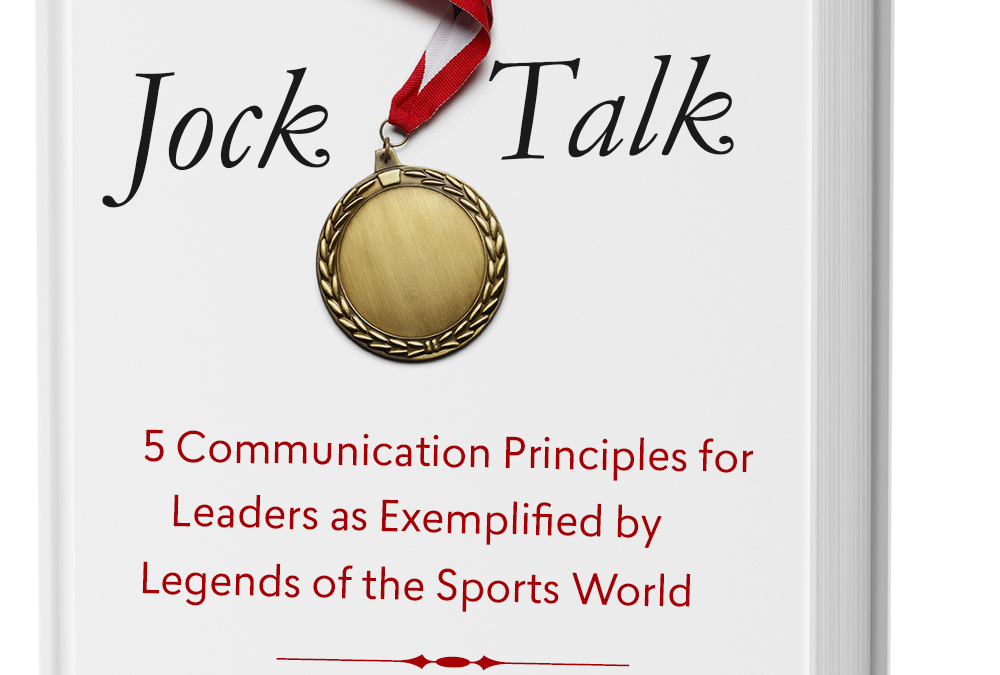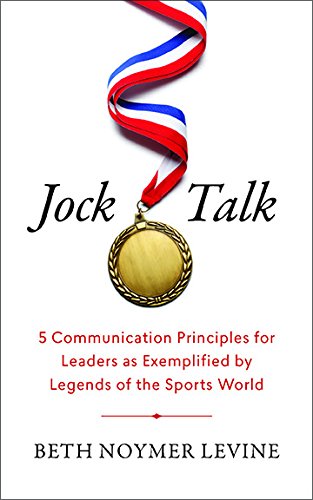by Beth Levine | Aug 16, 2016 | public speaking
 The Olympic Games are upon us and not only is the USA winning in the medals race, but many of our athletes are setting some great communications examples. Naturally, there are so many terrific examples coming out of Rio right now and, while most of them are stellar and memorable in their own ways, some are not Olympic quality. Let’s take a look at one winning and one losing example in today’s post.
The Olympic Games are upon us and not only is the USA winning in the medals race, but many of our athletes are setting some great communications examples. Naturally, there are so many terrific examples coming out of Rio right now and, while most of them are stellar and memorable in their own ways, some are not Olympic quality. Let’s take a look at one winning and one losing example in today’s post.
In the winner’s circle: I found Kayla Harrison’s post-win interview with NBC particularly noteworthy. Kayla won gold for the US in Judo (78KG division) for the second time in a row and thus making her the most decorated American Judoka of all time and of any gender.
When Liam McHugh of NBC asked her about her experience of being booed by the crowd in Brazil, Kayla embraced the Jock Talk principle of #graciousness. She could have taken the low road and been critical of the Brazilian crowd, but instead she turned it around. She took the high road and turned a negative into a positive. She said she actually enjoyed being booed, because it made her feel like “the bad girl,” which was something she found refreshing and different.
This should be no surprise coming from Kayla as taking the high road, being positive and helping others is her brand. Kayla is someone who suffered sexual abuse at the hands of a coach when she was in her teens, but has overcome that to become a history-making world-class champion. Additionally, she is using her star power to found a non-profit to help victims of abuse. Kayla does not back down from tough questions or the hard truth, and she manages to find the positive even in bad situations.
Not every American athlete, however, has followed Kayla’s lead.
In the loser’s circle: After getting knocked out of Olympic soccer tournament medal-less by Sweden, USA’s Hope Solo kept up her streak of controversial comments by calling the Swedish team “a bunch of cowards.” (Whoa! Was that really necessary, Hope?) This kind of negative language immediately makes her into the bad guy and the Swedes into the good guys. No one likes a sore loser, especially at the Olympic Games. Even if she had had a legitimate point, that point would have been lost to the uproar over the negativity of her reaction. (Sportsmanship, Hope!) A lack of #audience-centricity and #graciousness with a little too much #transparency predictably leaves a bad taste in people’s mouths.
When the world comes together in the spirit of peace and athletic competition, there’s no room for anything but #audience-centricity and #graciousness. And really, this provides a good lesson and model for the rest of us – even if we’re not Olympians – which is to embrace #audience-centricity and #graciousness no matter what, at all times. It’s a winning combo!
by Beth Levine | Jan 19, 2016 | preparing for a presentation, public speaking
 Use visualization and positive imagery …
Use visualization and positive imagery …
Do breathing exercises …
Tell a joke …
Picture your audience in their underwear … Should you try these techniques? Will they put you at ease? Most important, will they help you engage your audience?
There’s a lot of multi-tasking required of a speaker while delivering a presentation:
- opening properly
- getting the amplification of the microphone or natural projection of the voice just right
- advancing slides or juggling A/V equipment
- making eye contact and employing good body language
- managing time, and
- remembering the flow of the presentation material
Honestly? The last thing a speaker needs is distracting gimmicks on top of the multi-tasking. I prefer the basics: simply focus on connecting with the audience.
In fact, the SmartMouth approach is based first and foremost on the concept of audience-centricity. Or, as I like to say, “It’s not all about you, it’s about them!” Getting back to basics in presentation training means reminding speakers to focus squarely on their audiences from preparation all the way through to the end of delivery.
What does this mean in practical terms? Well, here’s a short checklist to help you understand what I mean:
- When preparing a speech or presentation, think about what interest the audience might have in your topic and what aspect or angle would be most beneficial to them – rather than what interests you.
- Go to the front of the room worrying about giving your audience a good experience – rather than worrying about how you look or whether you sound smart. (You do look good, you made sure of that already! And you are smart, that’s why you’re at the front of the room!)
- Open by acknowledging your audience – offering a compliment, recognizing good work, identifying a common bond – before you introduce yourself or share anything about your background.
- Look at them as if you were trying to draw them in and make new friends. Even move toward them if you can slip away from the podium. Make the people in front of you a more important focus – than yourself and your material.
- Remember to smile, be present, use people’s names if you can, and be yourself. People really like all of those things. It puts them at ease and engages them. And when they’re at ease and engaged, you will be too!
by Beth Levine | Jun 30, 2015 | preparing for a presentation, public speaking
 I was reminded yesterday by @TanyaRivero on @WSJLive that it’s wedding season, which means lots of toasts are being delivered. Best Man toasts. Maid of Honor toasts. Father of the Bride toasts. You name it!
I was reminded yesterday by @TanyaRivero on @WSJLive that it’s wedding season, which means lots of toasts are being delivered. Best Man toasts. Maid of Honor toasts. Father of the Bride toasts. You name it!
The way I see it, toasts fall under the category of highly personal speeches – a category that includes not just toasts, but eulogies, graduation and retirement sendoffs and the like. These kinds of speeches are often touching and/or funny, yet they also provide the perfect storm for audience-centricity to implode; the topic is limited to a couple or person, the speaker was chosen for their special relationship to the couple or person, and the audience is made up of people who also have their own special relationships with the couple or person.
Sounds like the perfect storm for perfection not disaster, right? Wrong. Apart from the notorious toast flops that include revealing long-held secrets or telling inappropriate stories, there’s another potentially damaging dynamic that happens when the speaker isn’t careful. And that is, they make the audience feel badly. By taking the opportunity to share personal stories, sometimes to excess or even exclusively, the toaster can make the audience feel left out or less important to the people being toasted. It ends up feeling exclusive and not inclusive to the audience.
By contrast, a speaker who embraces the principle of audience-centricity during a toast or other highly personal speech might talk about the qualities or experiences that everyone in the room knows about and can appreciate or laugh at; they might share lessons learned from the couple or person being toasted that everyone can related to; or they might take a bigger picture view of the occasion and talk only about the couple or the person and not even include their own personal connection.
The audience-centric speaker in the case of a wedding toast or other highly personal speech opens the tent wide so that everyone in attendance feels connected and feels like they could have toasted the couple or person with that very same speech.

by Beth Levine | Mar 5, 2015
In The News Forbes.com Communications 3.0: Nuance Is The Key Ingredient- October 2023 5 Things To Think About Before Working With A Coach – March 2023 3 Ways To Supercharge How Impressive You Are On Stage – October 2022 What Media Trainers Can Learn From...

by Beth Levine | Jan 13, 2015
The Book #1 Amazon Bestseller Purchase Amazon 800ceoread Books A Million Barnes and Noble Audible About Jock Talk A substantive yet down-to-earth business book that entertains while it teaches leaders and aspiring leaders why and how they should shape their...
 The Olympic Games are upon us and not only is the USA winning in the medals race, but many of our athletes are setting some great communications examples. Naturally, there are so many terrific examples coming out of Rio right now and, while most of them are stellar and memorable in their own ways, some are not Olympic quality. Let’s take a look at one winning and one losing example in today’s post.
The Olympic Games are upon us and not only is the USA winning in the medals race, but many of our athletes are setting some great communications examples. Naturally, there are so many terrific examples coming out of Rio right now and, while most of them are stellar and memorable in their own ways, some are not Olympic quality. Let’s take a look at one winning and one losing example in today’s post.
 Use visualization and positive imagery …
Use visualization and positive imagery … I was reminded yesterday by
I was reminded yesterday by 



